After completing my graduate studies at Clemson University, I was fortunate enough to join the studio art faculty at the College of Charleston. The good news kept coming as I was later informed that I had been selected to participate in the long-term Visiting Artist residency in partnership with the Gibbes Museum and College of Charleston. My move to Charleston was set. Moving to Charleston was a conscious decision to distance myself from familiar roads and break out of my comfort zone. This new environment and potential for new experiences would inform my work in a fresh way.
I had never been to the Gibbes Museum before and wasn’t sure what to expect. When I arrived in August, I was blown away by the Museum’s collection of high-quality work in such a beautiful place. The Museum’s contemporary exhibition at the time was an amazing show by the artist Radcliffe Bailey. His exhibit, entitled Pensive, was a refreshing and impressive example of contemporary sculpture not often seen in the South. I felt common ground with Bailey’s use of found objects combined with extremely well crafted original forms. His work crossed the boundaries between drawing, installation, and traditional free-standing sculpture. Materials ranging from piano keys, steel, dyed fabric, tar, and even taxidermy animals showed how expansive sculptural work can be. The installation as a whole was rich, nostalgic, dark, and alchemical, all of which are avenues I find myself exploring in my own work. The show was spectacular and impressive to say the least. Even more impressive was the fact that this was the quality of work that the Gibbes Museum brings to the public. I was honored and humbled to be a part of the Museum.
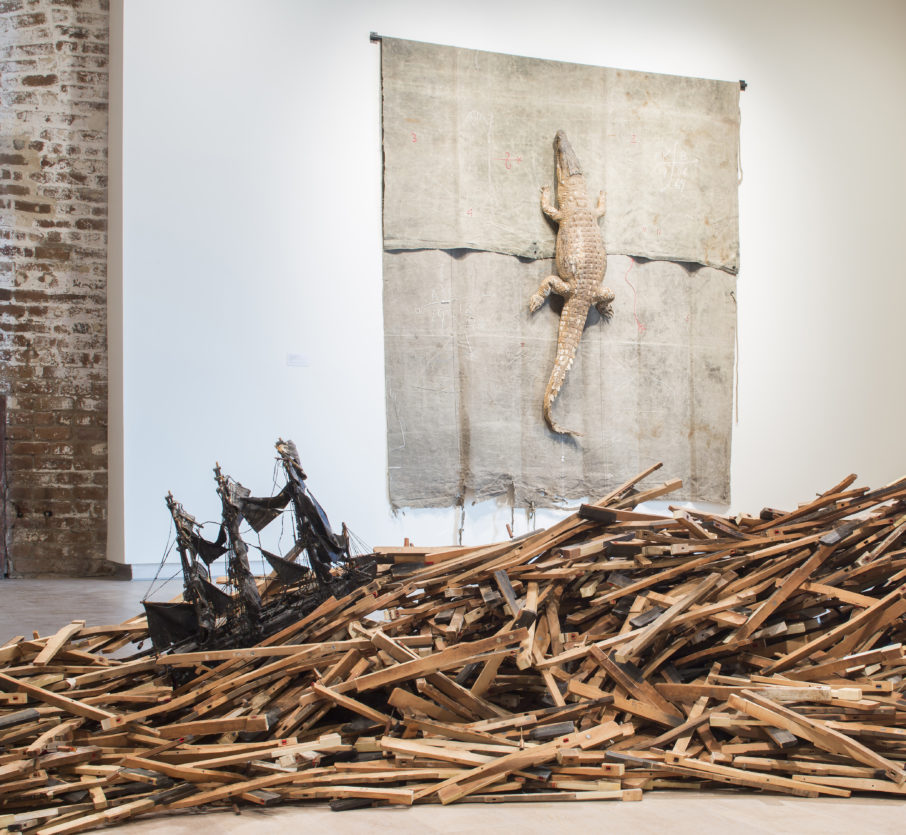
Working within the walls of the Gibbes in Studio 2 presented some unique challenges to my normal sculptural practice. Much of my recent work has been relatively large scale with materials like steel and wood that require extensive, labor-intensive processes and equipment. My working studio space at the Gibbes has forced me to scale down and think through new ways of working while utilizing the studio as a show space for larger pieces, and has given me much needed time to reflect on where my work came from, where it is now, and how it might further develop in the future. Being able to engage with the local community and visitors to the studio has been extremely helpful in thinking through new ideas and the ever-challenging game of intention versus outcome that exists within conceptual art making.
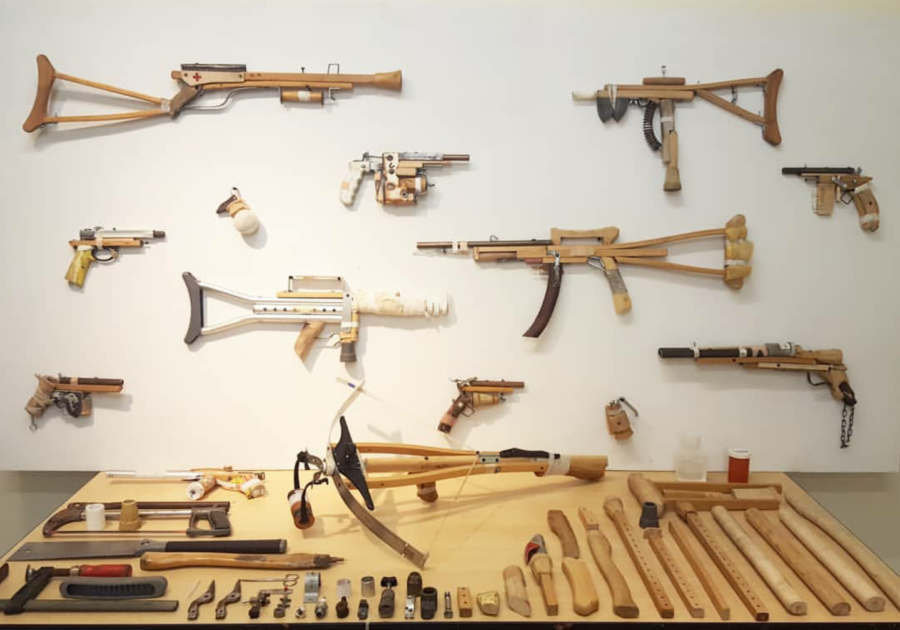
I have been continuing work on a sculpture series titled Systems. This ongoing work explores the inter-connectivity of opposing forces. Crutches, medical equipment, and broken machinery are combined into the likeness of firearms and weaponry. Having an open studio that encourages visitors to view the work and take part in the discourse has been extremely informative and enjoyable. The pieces help create a platform for diverse opinions and dialogue to be shared where they might otherwise have gone unsaid. As a working artist and educator, this avenue for discussion is paramount to my continued studio practice and helps bring art to a higher level, beyond the confines of gallery space. I personally believe that art should exist as a catalyst for deeper analysis and thought, thereby creating the potential for art to have an impact on the world outside of mere showcase of skill or formal aesthetics.
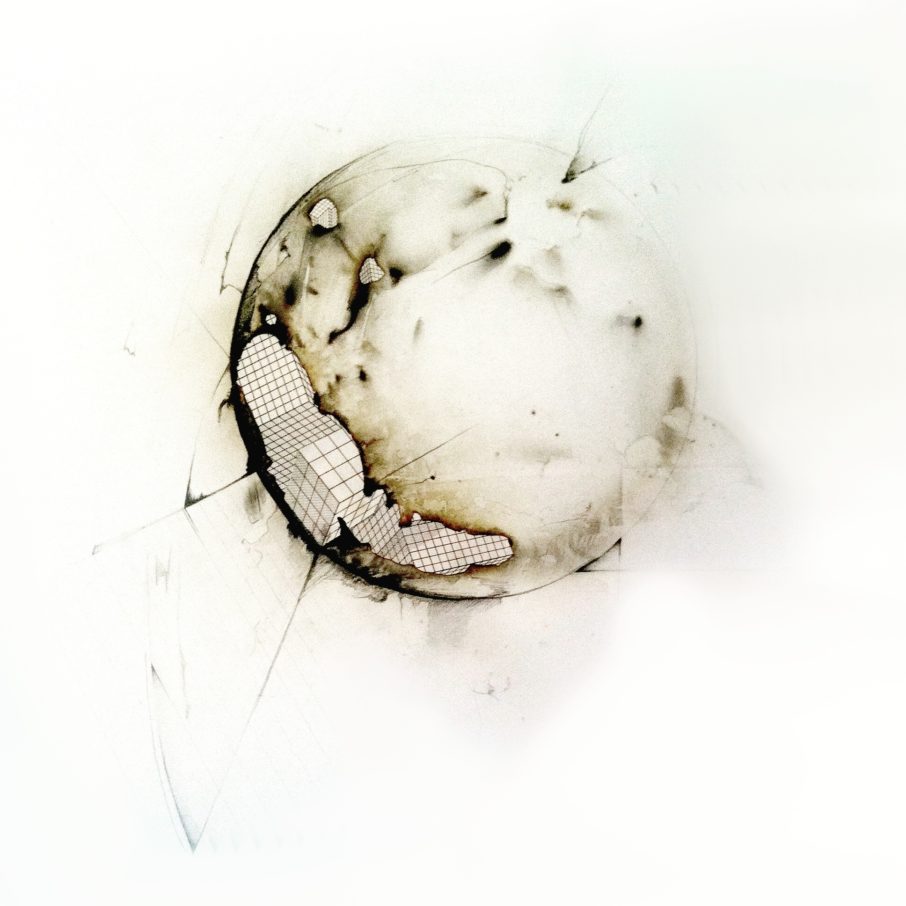
My time here has presented an opportunity to delve deeper into drawing, a skill set that is often ignored in my studio as labor-intensive sculptural processes have recently taken precedence. I seldom work in a linear fashion, favoring a creative cycle that unifies a diverse and tenuously connected web of ideas. I flow through concepts and processes as one might skim through the favorite parts of a good book. While this way of working creates a deeply varied body of work and an ever-changing creative flow, it often means that certain ideas get put on hold. Being in the new space helped me to dive back into drawing as an almost meditative practice while thinking through sculptural plans.
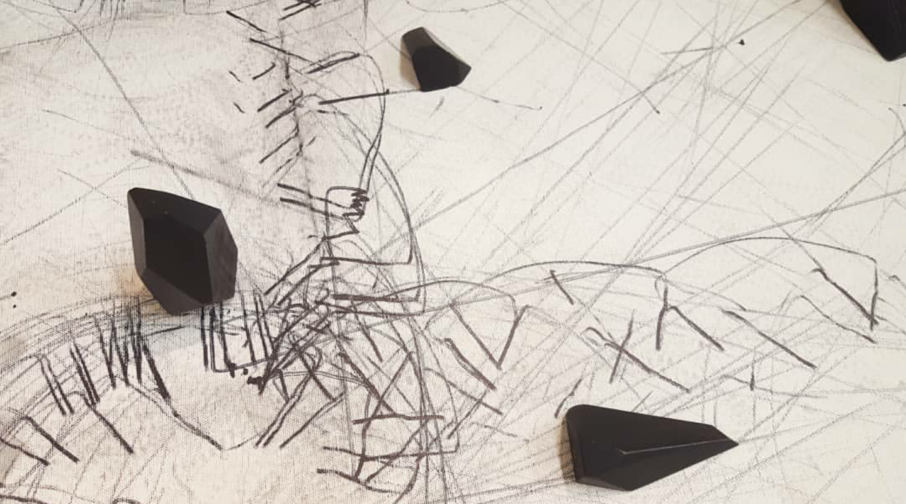
This push back to drawing has led to experimenting with alternative drawing practices. In an attempt to bridge the gap between 2-D and 3-D genres, I’ve been developing a process of drawings using what is known as the Lichtenberg effect. This involves a homemade machine that electrifies the surface of a suitable substrate, in this case, burning fractal patterns of electricity onto a wooden surface. These drawings exist in a realm somewhere between science, performance, wood burning, sculpture and drawing. Again, the opportunity to showcase this process and listen to the feedback from studio visitors has been very helpful in how I might further unpack this unique tool into future work.
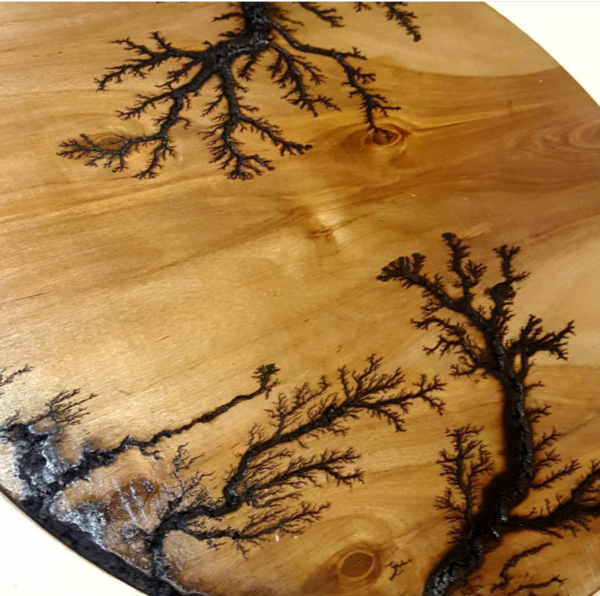
I plan to continue these alternative process drawings during my remaining time at the Gibbes and to further explore the unique and diverse mark making created by implements that are often overlooked. In a way, this process allows me to take a step back from my relationship to the work, in which I function as a facilitator of “happenings” rather than the hand of creation. Forces of nature, gravity, physics, and the often underappreciated locomotion of machines are given a new voice.
— Carey Morton, Gibbes Museum Visiting Artist and guest blogger
Learn more about Morton’s artistic process at his upcoming in-studio demonstration on Monday, November 12 and Friday, November 17, at 11am.
Published November 9, 2018
Top Image: Visiting Artist Carey Morton in studio at the Gibbes. Image by MCG Photography.

